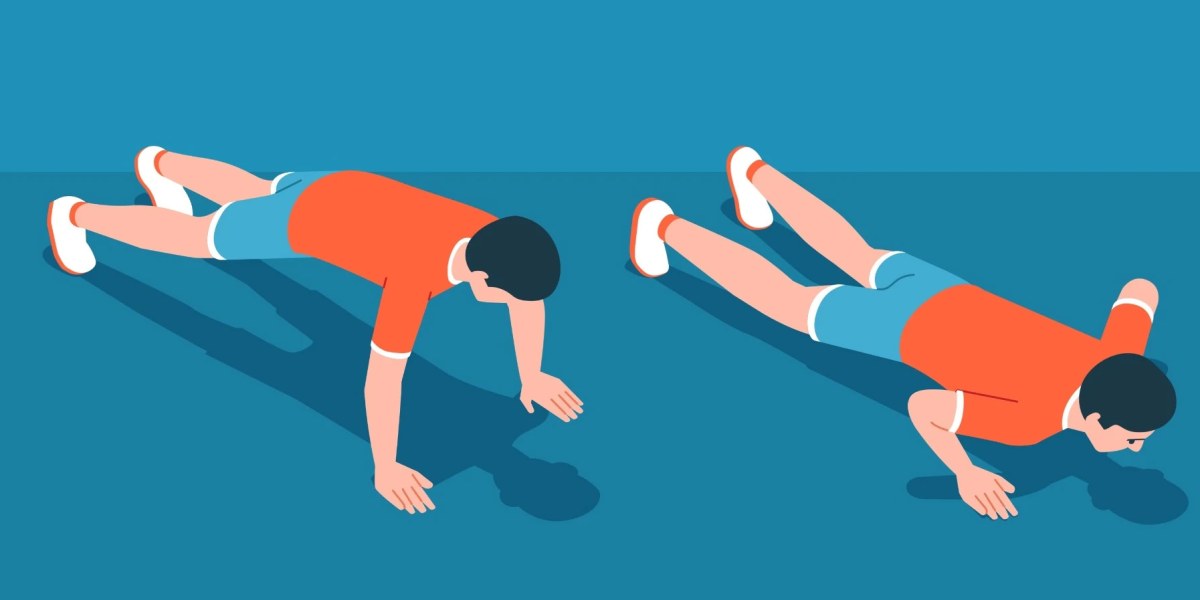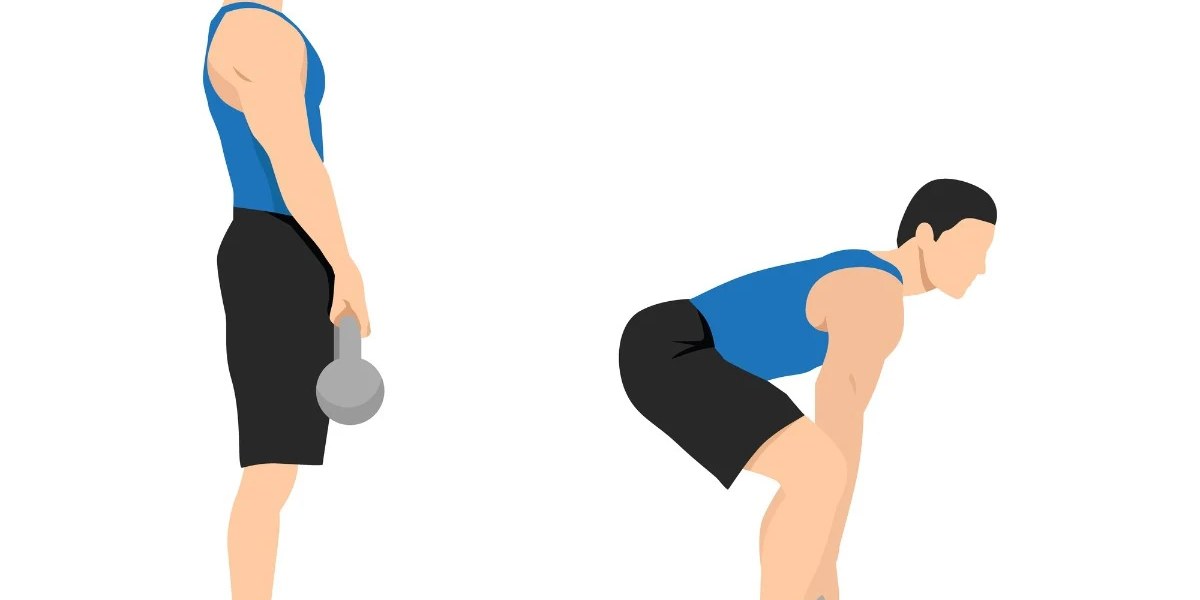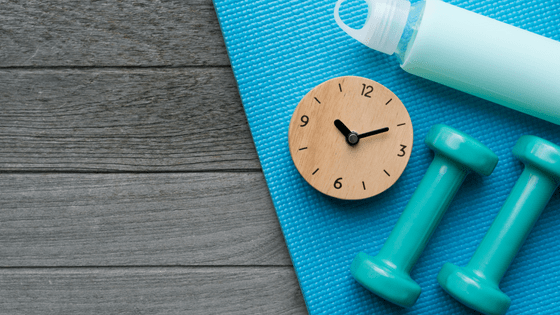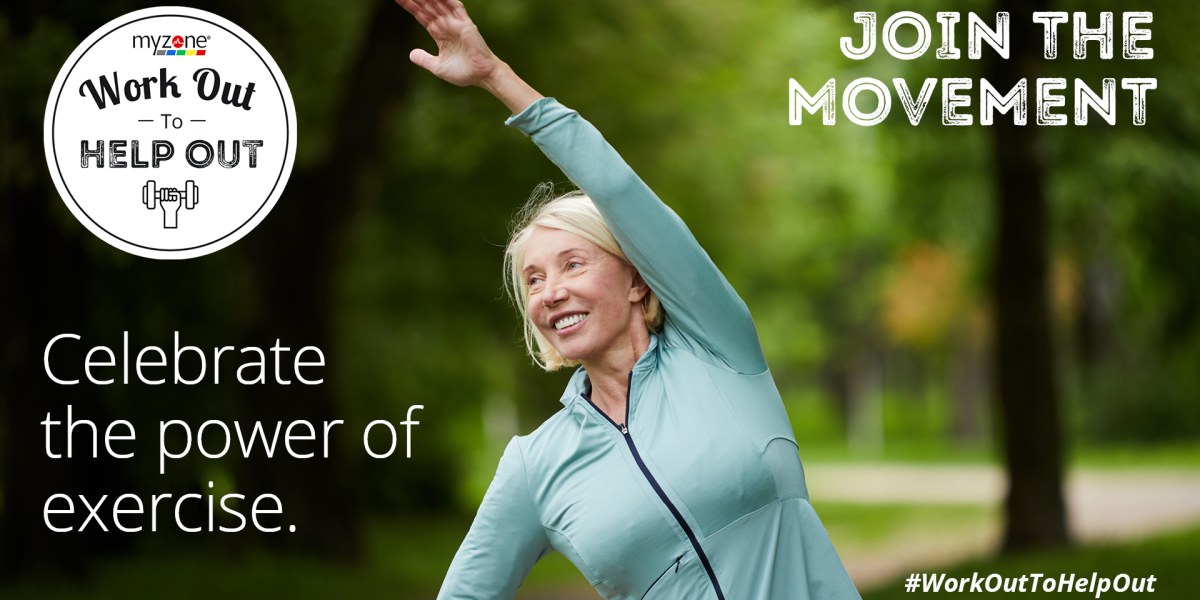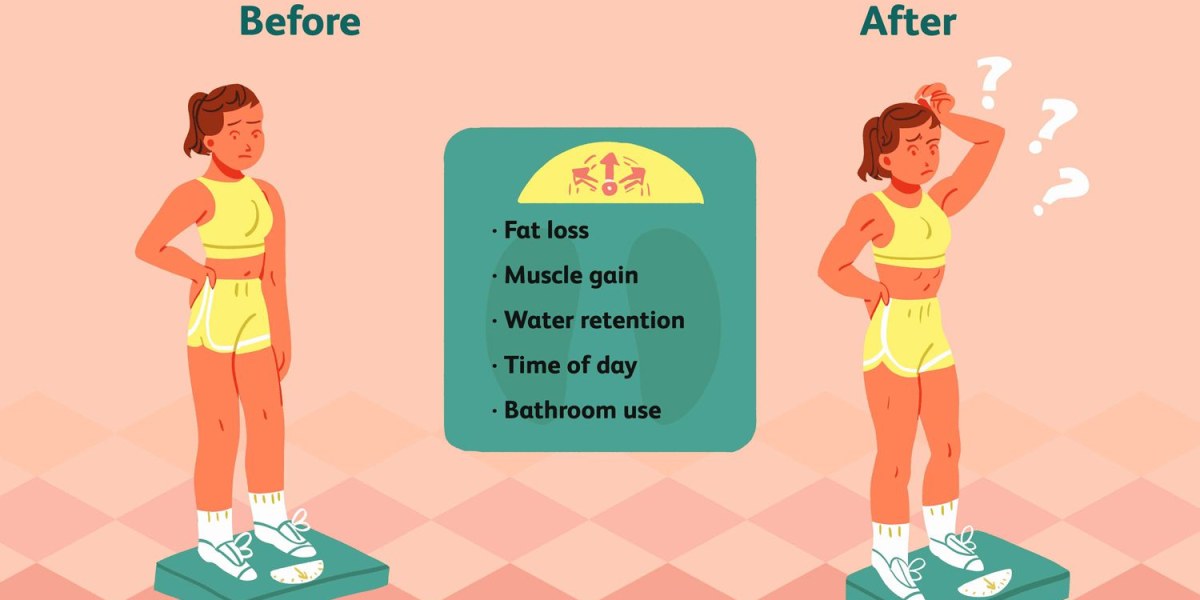Independence Row
Beginner: Bent Over Row
The starting position for this move is similar to that of a deadlift, with hinged hips and a flat back. Hold a dumbbell in each hand and stand with feet hip-width apart.
Hinge at the hips until your chest is parallel to the floor and back is flat. Lower dumbbells to the floor until arms are straight.
Squeezing the shoulder blades together, slowly bend your elbows to pull the dumbbells back toward your hips.
Make sure to keep your elbows tight next to your body. Return to starting position. Do this bent over 10 times.
Moderate: Single Leg Bent Over Row
Holding a dumbbell in each hand, stand with feet hip-width apart.
Hinge at the hips until your chest is parallel to the floor and back is flat.
Lift one foot off the ground and extend it straight back. Lower the dumbbells to the floor until elbows are completely straight. Make sure to pull the shoulders down and away from the ears.
Squeeze your shoulder blades together, draw your belly button toward your spine, and slowly bend your elbows to pull the dumbbells back toward your hips. Return to start. Do this single leg row 10 times before switching legs.
Advanced: Plank Row (Renegade Row)
Place two dumbbells shoulder-width apart on the ground. Start in a high plank position, with shoulders stacked over the hands, each hand gripping a dumbbell, feet hip-width apart.
Pull your shoulders down and away from the ears, and slowly bend one elbow back, keeping arm close to your side as you pull the dumbbell up toward your hip.
Return to starting position, placing the dumbbell down softly.
Do this 10 times before switching to the opposite arm. #fitnessclub #womanfitness #fitnesscenter #Fitness #healthyliving #daypass #gym
Star Spangled Push-Ups
Beginner: Wide Hands Push-Up
- Start in a plank position with your hands wider than shoulder-width apart.
- Slowly bend your elbows out to the side as you lower your body toward the floor. Pause when your chest is slightly hovering from the floor.
- Engage your core as you press into your hands to lift your body back to the starting position. Do this push-up 10 times. (You can also wrap a resistance band around the back and hold an end in each hand for a greater challenge).
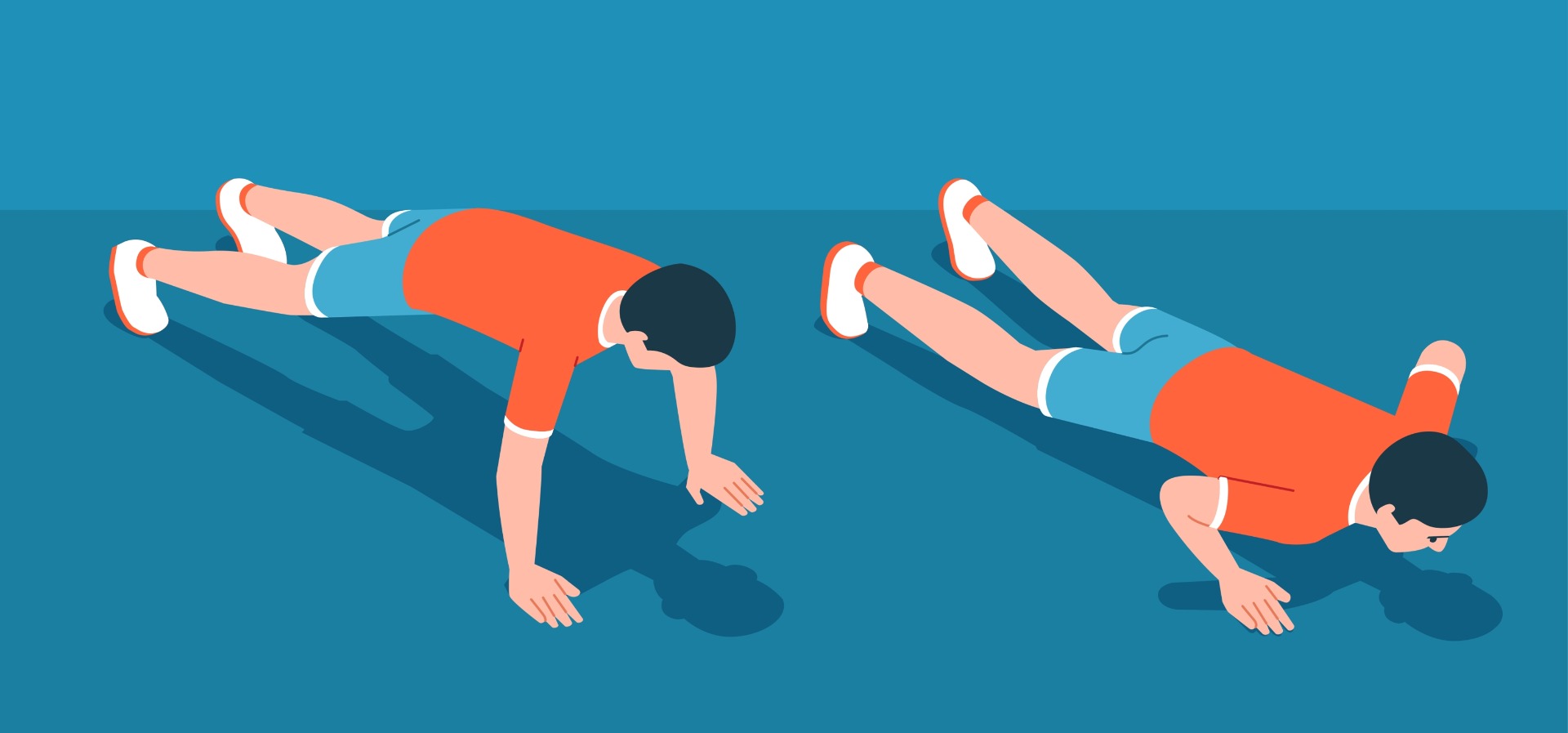
Moderate: Diamond Push-Up
- Start in a plank position, with your hands together and angled inward at 45 degrees. Your index fingers and thumbs should touch to form a triangle (or diamond).
- Keeping your elbows tight to your body, bend them to lower your chest toward the floor.
- Engage your core as you press into your hands to lift your body back to the starting position. Remember to keep the triangle directly below your chest throughout the movement. Do this diamond push-up 10 times. (You can also wrap a resistance band around the back and hold an end in each hand for a greater challenge).
Advanced: Staggered Hands Push-Up
- Starting in a plank position, move one hand forward and the other back so they’re offset by about 6 to 12 inches.
- Slowly bend your elbows as you lower your body toward the floor. Pause when your chest is slightly hovering from the floor.
- Engage your core as you press into your hands to lift your body back to the starting position.
- Keep your elbows tight to your body throughout the movement. Do this staggered push-up 10 times. Switch the fore and aft positions of your hands to work the other side. (You can also wrap a resistance band around the back and hold an end in each hand for a greater challenge).
Firework Deadlifts
Beginner: Romanian Deadlift
- Stand with your feet hip-width apart, knees slightly bent. Hold a kettlebell at your thighs. (You can also use dumbbells if you don’t have a kettlebell).
- Hinge at the hips, bending slightly at your knees. With your back flat and torso parallel to the floor, lower the weight to reach your shins.
- Keeping your core tight, push through your heels to stand up straight. Keep the weight close to your shins as you pull up. This completes one rep. Do this deadlift 10 times.
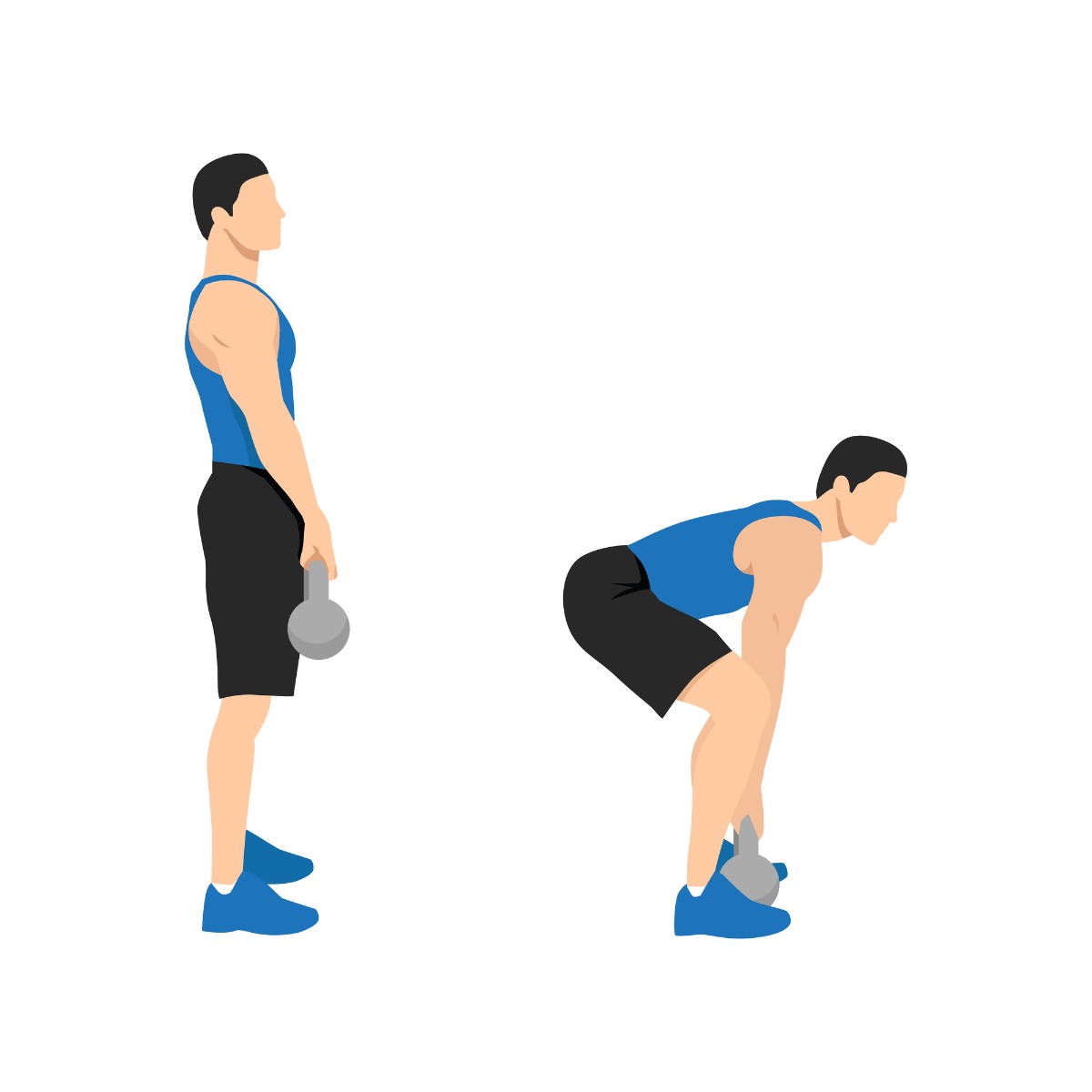
Moderate: Kickstand Deadlift
- Stand with your feet hip-width apart. Hold a dumbbell or kettlebell in each hand.
- Place one foot a foot-length in front of the other. Your stance should be staggered.
- Hinge at your hips to lower your body. With your back flat and torso parallel to the floor, lower the weights to reach your shin of your front leg.
- Keeping your core tight, push through your front heel to stand up straight. Keep the weights close to your shins as you pull up.
- This completes one rep. Do this kickstand deadlift 10 times before switching legs.
Advanced: Single RDL
- To start, stand with your feet together. Hold a dumbbell or kettlebell in each hand.
- Shift your weight to your right leg. While keeping a slight bend in your right knee, raise your left leg straight behind your body. Hinge at the hips to bring your torso parallel to the floor and lower the weights toward the floor.
- At the bottom of the movement, your torso and left leg should be almost parallel to the floor, with the weight hovering a few inches off the ground.
- Keeping your core tight, push through your right heel to stand up straight and pull the weight back up to the starting position. Bring your left leg back down to meet your right.
- This completes one rep. Do this single RDL 10 times at a slow and steady pace before switching legs.
Exercise? Your days are busy from the moment you wake up. Between getting the kids set for the day, running your household, and managing your career, you’ve got a lot on your plate. And if you can’t find time to work out in the middle of it all, you are definitely not alone.
We all know exercise is critical for maintaining a strong body, decreasing the risk of chronic disease, and safeguarding mental health.
Still, it can be tough to fit in a workout on busy days.
We know exactly how hard finding time to exercise as a working mom can be. Many women in this situation are professionals, executives, and all-around boss ladies with jam-packed schedules.
Fortunately, we can tell you that it is possible to find time to exercise, even with the busy lifestyle of a working parent.
In this post, we’ll share a few tips for prioritizing your fitness and carving out some time each day for you, your health, and your goals.
Let’s dive in.
How Can Working Moms Find Time to Exercise?
If you’re raising small kids or struggling with finding time to exercise when working an irregular schedule or traveling a lot, you might feel frustrated when it comes to exercise.
You want to find time for fitness, and you know it’s important to your overall health and wellbeing, but you’re finding it difficult to create a schedule.
Fortunately, all you need is a plan.
Here are a few of the top strategies recommended for working moms:
1. Make an appointment with yourself
You’d never dream of missing that big presentation or client meeting, and you honor your daily calendar like it’s a legally binding contract. Because of this, we always recommend that women juggling a busy lifestyle prioritize their fitness by putting it on a calendar, just like you would any other important appointment.
And, here’s the deal:
Once it’s on your calendar, it’s non-negotiable. This appointment with yourself is exactly as important as a meeting with any client or partner.
Write your class times in your day planner, have your assistant block off your weekly workouts in your meeting book, or enter your workout windows in your Google Calendar.
This keeps things organized and helps you get proactive about protecting your exercise time. It’s a simple trick, but it can go a long way toward helping yourself stay accountable.
2. Clarify your “why”
When you don’t have a clear motivation to work out, it’s easy to compromise your fitness goals. To prevent that, I recommend visualizing the “why” that keeps you motivated.
Take a moment to think about why you exercise, and why fitness is important to you.
It could be…
- To stay fit and avoid health problems
- To feel good in your clothes and body
- To stay strong and active so you can keep up with your kids as they grow
- To set a good example for your children
- To reclaim your body after having a baby
- To pursue an audacious goal, like running a marathon or participating in a fitness competition
No matter what your motivation is, finding a way to keep it top of mind is critical.
If you’re a highly visual person, I recommend writing a “mission statement” (example: “I work out to keep my mind and body strong so I can set an excellent example for my children and be an effective head of my household”) and keeping it someplace you’ll see it every day.
Next time you feel like skipping the gym, your mission statement will help you dig deep and find your motivation.
3. Pre-book a session with a personal trainer
We tend to be more committed to things we’ve already invested in, or things that someone is counting on us to do (this is especially true for women).
That’s exactly why personal training tends to be so effective:
When you pay a trainer and book a session you know they’ll be waiting for you to show up to, you’re much less likely to decide that you just don’t have the energy to hit the gym.
Why? Simple: you have someone keeping you accountable to yourself.
With this in mind, find ways to commit (in advance) to your weekly workouts. Sign up for classes online, pre-pay for your workouts, or leverage one of our online fitness courses.
Online classes allow you to schedule classes whenever you have time while also tapping into a virtual fitness community that will hold you accountable to reach your goals. Because they’re so convenient, I think online classes are the best workout for busy professionals.
4. Make it a group activity
Again, accountability matters when it comes to staying fit. And exercise is just more fun when you have someone to do it with.
If you’re usually a solo exerciser, I recommend finding ways to involve your friends and loved ones in your fitness goals.
Here are a few ideas:
Enlist a girlfriend as a running buddy, set a lunchtime gym date with a coworker, plan active outings with your kids and family, or sign up for group fitness classes.
When it comes to meeting your long-term fitness goals, encouragement from others can make all the difference.
5. Maximize small chunks of time
Here’s a hard truth:
There’s always time to work out. You have the same number of hours in the day as anyone else – it’s how you use them that matters.
Even the busiest schedules offer opportunities for a workout. While you might have to get a little creative with it, there are ways to carve out time.
Here are a few suggestions:
- Utilize your lunch break. Meal prep for the week to ensure you have a healthy lunch at the office with you — or, even better, sign up for our healthy meal delivery service. This frees you up to head to the gym before it’s time to get back to work. If you’re still working from home, lunchtime is an excellent time to squeeze in a walk for some steps and fresh air.
- Wake up early. One of the easiest ways to make time for exercise is to get up earlier than normal. Early mornings are an excellent time for working moms to find some peace and quiet. While your kids and partner are still asleep, you can take a run, do some at-home cardio, or join one of your favorite online fitness classes.
- Add more activity to the things you already do. Look for ways to combine workouts with something you already need to do. For example, consider combining your workout and your commute by biking to work, or walk to the store instead of driving. Alternately, fit in a quick workout on the way home from the office (make it easier by keeping a gym bag full of fresh workout clothes in your car at all times). Even simple things – like riding a stationary bike while you watch your favorite shows – can go a long way toward helping you maximize your time and crush your fitness goals.
6. Work out at work
Working moms are the queens of multitasking, so why not get your daily dose of exercise even when you’re stuck in the office all day?
From sitting on a balance ball instead of an office chair (excellent for your core and stabilizing muscles) to squeezing in a few reps of dumbbell curls, there are dozens of genius ways to work out while you’re at work.
Any time you have a few extra minutes, lock the door, forward your calls, and join me in the online studio.
7. Gift yourself a membership
Finding time to exercise each day is mostly about making it a priority. And, for smart, strong, driven women like my clients, one of the best ways to do that is to invest in the process.
In addition to weekly touchpoints designed to hold you accountable, buying yourself a membership to work with me provides dozens of benefits that support your health goals:
- Get monthly meal plans and nutritional counseling tailored to your needs and goals
- Access our convenient app where you’ll receive customized habits coaching and a cardio plan designed to get you to your goals.
- Enjoy a private Facebook members page where you can meet like-minded ladies
- Secure priority scheduling – because your time matters.
If you’re working remotely or you have small kids, I also offer in-home training services.
Our mobile trainer will either come to your home with all the necessary equipment for a great workout, or you can hop onto Zoom for an effective, tailored session designed for you.
This is an excellent way to get a great workout between digital calls or meetings.
Manage Your Fitness Goals Like the Executive you are
Life as a working mom means wearing lots of hats. You play a critical role in the lives of your kids, partner, coworkers, and clients, and taking care of them requires you to take excellent care of yourself, first.
When you prioritize your fitness, you get proactive about creating and maintaining the best version of yourself and insisting on a healthy and well-balanced life – for you and everyone who loves and counts on you.
While finding time to work out during a hectic day can be challenging, the secret is just getting serious about making time. The tips in this post will help you find the space, and I’ll help you find the perfect workout to fill it with.
Ready to focus on your fitness?
Just as we need to look after our bodies, so we all need to take care of our mental health. According to the World Health Organization, one in every eight people worldwide (970 million) live with a mental disorder, and almost one in two (44%) will experience a mental health disorder in their lifetime.
From TV celebrities to royal family members, mental health conditions can affect anyone at any age and at any time. They can stretch from days to decades. The good news is that physical activity can help.
Countless studies show the benefit of exercise. People who move more report higher levels of wellbeing and lower levels of stress and anxiety.
It’s more than just about your home life, too, as more employers are learning how to support employee mental wellbeing through physical activity every year.
Physical activity releases those feel-good hormones that improve your mood and give you more energy. It also helps you sleep better; we all know how poor sleep can affect your mood.
The natural anti-depressant nature of exercise
Exercise is so beneficial in treating mental wellbeing problems that at the start of 2023, researchers from the University of South Australia (UniSA) said it should be the first choice treatment for depression and other common mental health conditions.
In one of the most comprehensive research reviews to date, this considerable study published in the British Journal of Sports Medicine confirmed that physical activity is highly beneficial for improving symptoms of depression, anxiety and distress.
In fact, the findings show that exercise is 1.5 times more effective than counselling or the leading medications in managing depression.
And it doesn’t take long to take effect, either. The research showed that exercise interventions lasting 12 weeks or less effectively reduced mental health symptoms.
What type of exercise makes a difference to mental health?
According to UniSA researchers, all types of physical activity and exercise benefit our mental wellness, from walking and resistance training to Pilates and yoga.
But the research did show that higher intensity exercise, those sessions when you are at the upper end of your maximum heart rate and hitting the yellow and even the red zones had more significant improvements for depression and anxiety. Longer workouts had more minor effects compared to short and mid-duration bursts of physical activity.
A ground-breaking report by the John W. Brick Mental Health Foundation (JWB) in 2022 reviewed over 30 years of published research on the link between physical activity and mental wellness. It found that combining strength training with cardiovascular exercise had more mental health benefits than either exercise alone.
The report also showed that mindfulness-based activities like yoga and tai chi, though they can be lower intensity forms of movement where you are primarily in the blue and green zones, deliver more mental health benefits than walking.
And team sports, cycling and aerobic or gym workouts are the top three forms of exercise associated with over 20% fewer “poor mental health” days per month.
How much exercise is enough to benefit your mental health?
The World Health Organization’s guidelines encourage people to do 150 minutes of moderate-intensity or 75 minutes of vigorous-intensity physical activity a week, which equates to 1300 Myzone Effort Points (MEPs) a month.
The JWB report found we should be doing three to five 30-45-minute moderate to vigorous weekly exercise sessions for optimal mental wellness benefits – matching the WHO physical activity guidelines.
People who hit this sweet spot have better mental health than those who exercise under three times a week. Interestingly, the research shows they also have better mental wellness than people who work out more than five times a week.
It shows that more exercise isn’t always better – don’t underestimate the importance of rest and recovery.
Where is the best place to exercise for mental health benefits?
The beauty of heart rate wearables like Myzone is that you can exercise wherever you want and still track your activity.
More and more evidence shows the benefits of exercising outdoors for your mental health. Being active in the fresh air, and especially in nature, reduces stress and anger.
This “green exercise” can also decrease levels of anxiety and depression, while the natural light can really help people who suffer from seasonal affective disorder (SAD).
From boosting your mood and improving self-confidence to relieving tension and enhancing your mindfulness, exercising in mother nature really is an all-around winner for our mental wellness.
However you like to exercise, get moving this Mental Health Awareness Month to boost your body and mind.
Fitness While Pregnant
There is an undeniable connection between healthy mothers and healthy infants. Debates on the benefits and potential risks of pregnancy & exercise have been gaining public attention across media and social media in the past few years, with strongly voiced pro and con opinions. While some are based on research findings, most appear to be based on gut, culturally and socially rooted opinions and what is deemed appropriate by each and every one’s standards and education on the matter.
Let’s add functional fitness to this already spicy mix. Functional fitness has always been a controversial subject due to the high intensity involved in the workouts, perceived by many as raising the risk of injuries, despite studies showing the injury risk per thousand hours actually being lower than in some endurance sports such as running. But as functional fitness is maturing as a sport discipline, its athletes are maturing together with it, making room for other issues critiques love picking on. We’ve witnessed the first generations of Games athletes hang up their competition shoes, but continuing high volume training. We’ve seen some of them start families and continue thriving in sports after cute little juniors appeared in the picture. As this appears to be a top subject for people hungry for controversy, we’ve found some research and decided to share the results of a few studies with you, to get a clearer view over physical activity during the prenatal and postpartum periods.
In this article we will discuss physical exercise in the prenatal period, including the benefits of exercising during pregnancy for the future mom and for the fetus, which exercises are recommended and which are to be avoided, how to scale according to each trimester and what are the body’s caloric requirements during pregnancy. We will dedicate a separate article to discuss fitness in the postpartum period.
What does research say about exercising and pregnancy
In the study “Benefits of Exercise during Pregnancy”, authors Heidi Prather, Tracy Spitznagle and Devyani Hunt reviewed over 125 research papers on the subject, published after the year 2002, and summarized their findings for a better understanding of the benefits of exercise on the mother, the fetus and the newborn.
It’s important to know that already in 2002 The American College of Obstetrics and Gynecologists recommended that, during pregnancy, women should perform 30 minutes or more of moderate-intensity exercise on most, if not all, days of the week. Despite of the fact that this recommendation became known worldwide, even nowadays many healthy pregnant women are either not advised about the benefits of exercise or choose not to engage in physical activity exercise. Moreover, it has been reported that both previously active healthy women and also inactive women are at low risk for adverse fetal or maternal events when engaging in routine physical activity during pregnancy. The study says that “after becoming pregnant, women generally tend to decrease their activity levels because of lack of motivation, perceived lack of time due to family and work demands, desire to postpone weight loss until after delivery, and pain with movement.”
Looking at the big picture though, aerobic exercise, some forms of strength training, stretching and yoga have all been repeatedly reported to be safe to perform when pregnant. When it comes to aerobic training, there’s a wide variety of exercises to choose from: stationary bicycling, jogging, walking, stair climbing, treadmill, water gymnastics, swimming, and aerobic dance classes – all of them having been used by pregnant women with no adverse effects.
Speaking about duration, women have reported to exercise between 12 weeks onwards throughout their entire pregnancy. The frequency of aerobic exercise participation among future moms is most commonly 3-5 times per week with sessions ranging from 15 minutes up to 150 minutes per session. According to the studies reviewed, 60 minutes or longer has been found to be safe for the mother and the fetus. The intensity of aerobic exercise can be safely monitored by using self-pacing techniques or heart rate monitoring using 50%-75% of the age-predicted maximum. An estimate of a person’s maximum age-related heart rate can be obtained by subtracting the person’s age from 220.
Benefits of exercising for the future mothers
Let’s look at the benefits for the mothers who exercise during pregnancy. These include improved cardiovascular function, a lower risk for gestational diabetes in both women who don’t suffer from obesity, but also in those who do suffer from it, improved strength and lean muscle mass, improved sense of well-being, and better quality sleep.
Weight gain during pregnancy is a natural and necessary process. But excessive gestational weight gain is associated with maternal complications, including cesarean delivery, hypertension, preeclampsia, impaired glucose tolerance and gestational diabetes.
The benefits are clear: the prevention of excessive weight gain (a key factor in the intergenerational transmission of obesity) and a lower risk of fetal macrosomia (babies who are born weighing more than 4 kilograms), pre-eclampsia, gestational diabetes, caesarean section, lower back pain, pelvic pain and urinary incontinence.
Moreover, there is no risk of premature birth, low birth weight or fetal distress, provided that the mother has no medical or obstetric contraindication for physical exercise.
The benefits of exercising for the fetus
Now let’s take a look at the benefits of mothers exercising during pregnancy for the fetus. These include decreased resting fetal heart rate, improvement in the viability of the placenta and increased amniotic fluid levels. This effect of exercise has been postulated to possibly provide protection against preeclampsia. However caution is suggested at exercise intensities above 90% of heart rate maximum.
Children of women who exercise during their pregnancy have lower birth weights, increased gestational ages, and potentially improved neurodevelopment. Newborns of exercising mothers had a lower percentage of body fat.
The study lead by Heidi Prather states that “although research in the neurodevelopment of infants born to active mothers is still limited, recently Apgar scores have been found to be higher in neonates who are born to exercising mothers.”
The risk of not engaging in physical activity
Along the course of history, more recently than not, pregnant women were advised to refrain from exercise because of concerns on fetal risk. Simultaneously, they were advised to increase their caloric intake during pregnancy. Recently, despite of the fact that a lot of new studies have proved the benefits of prenatal exercise, most pregnant women do not meet the recommended guidelines for physical activity. This is a real problem because low exercise rates have been proven to increase the risk for glucose intolerance of variable degree and subsequent obesity, Type 2 diabetes, and cardiovascular disease.
A high maternal weight is associated with a higher birth weight of the newborn and contributes to the intergenerational transmission of obesity. Consequently, pregnancy has evolved as a major contributor to the worldwide obesity epidemic. Besides the risk of excessive weight gain, inactive pregnant women are more prone to pre-eclampsia, gestational diabetes, caesarean section, lower back pain and urinary incontinence.
The physical activity and pregnancy literature have evolved sufficiently over the last 50 years and there is currently enough empirical evidence to support the promotion of moderate to vigorous prenatal physical activity for maternal health benefits.
Moreover, there are proofs that exercise should be taken not only by healthy, previously active women, but that it is also a good time to adopt a healthy lifestyle by women who had rather sedentary lifestyles pre-pregnancy. Studies show there are clear advantages for both the mother and the baby.
“The percentage of women who meet the recommendations for exercise during pregnancy is very low,” says María Perales, the lead author of “Exercise During Pregnancy” and a researcher from the department of Physical Activity and Sports Science at Camilo José Cela University (UCJC). She continues saying the lack of physical activity is due to the uncertainty regarding exercises that are recommended and those that need to be avoided.
Which physical exercises are recommended and which should be avoided?
New studies highlight the physical activity patterns which have proven to be most beneficial during this period, as well as the exercises which these women should avoid as they might pose a risk to the fetus.
When it comes to the type of exercise, duration and weekly frequency, the experts stress the importance of combining aerobic and strength training in each session, which should last between 45 to 65 minutes.
The intensity should always be moderate and it should be analyzed for each woman and controlled throughout the session. Physical activity can be started between week 9 and 12 of pregnancy (after the first prenatal visit), generally until week 38-39.
Techniques such as Pilates and yoga, often recommended during this period, are not linked to the physiological benefits described, but have shown improvements in mental health and pain reduction.
In terms of exercises which should be avoided, “all that is strenuous (90% or more of maximum heart rate), since it may increase the risk of hypothermia, dehydration or reduced uterine blood flow with the associated risk of compromising the fetus’ health,” Perales stresses.
Similarly, long-distance running, intense weight and isometric contraction training, jumps, impact exercises and exercises with risk of falling or requiring lying on your back, must be suspended.
Prenatal functional fitness exercising
Based on all of the afore mentioned sources and conclusions, functional fitness exercising falls right under the category of recommended exercising during pregnancy. If you have already interacted with the functional fitness community and culture, you know that many performance athletes in this sport have recently become pregnant, among which are 8 times Games Athlete Stacie Tovar, 6 times Games athlete Emily Bridgers, 2017’s Second Fittest Woman on Earth Kara Saunders and the list can continue. All these ladies have continued exercising during their pregnancy, doing the Open workouts and scaling whenever it was necessary.
Currently Stacie Tovar is in her 32nd week of pregnancy and still works out 5 times a week together with the group classes and scaling almost everything.
We’ve done some research on each trimester among future moms and coaches training pregnant women and we’re happy to share with you what’s to expect, how to scale and most importantly, how to listen to your body, as this is the best indicator on how your scaling should be. The recommendations below are applicable to women doing functional fitness already before the pregnancy. If you are starting functional fitness after you became pregnant, make sure you talk to your doctor in advance and let your coach know you’re pregnant before starting the classes.
Doing functional fitness in your first trimester
Training in the first trimester can be similar to what you were doing before the pregnancy. For women doing functional fitness regularly, maintaining your regular weights should be ok, but be careful at the overall intensity. This is a time to maintain your fitness, rather than improve it. The lifts involving maximum effort and those workouts involving high intensity need to be approached with moderate efforts. Aim for a level of intensity that feels like a 7-8 on a 1 to 10 scale and change one rep max lifts to 3 less loaded lifts. The best “test of moderation” is talking during a workout. If somebody asks you “How do you feel?” your should be able to answer with a sentence, rather than scattered words among convulsive breaths. In the first trimester it is still safe to perform such exercises as bench press or sit ups, if you feel perfectly fine doing them.
One thing you will have to consider is your morning sickness. There is a chance this will appear in the first trimester and you will have to listen to your body and adapt your workouts schedule accordingly. Going to the afternoon class will be a much better choice than working out while feeling nausea in the morning.
Continuing functional fitness in your second trimester
Once you’ve entered your second trimester, around week 20, you will start noticing more changes which will signal scaling and adapting to your new condition. It is advised to avoid lying down on your back for a long period, because the uterus can be at this moment large enough to obstruct the needed blood supply to you and the fetus. Notice your body while bench pressing – if you feel light headed when you get up from the bench, take it as a sign from your body to stop this exercise until after birth. Avoid sit-ups, as they present a risk of diastasis recti.
Another change is your increasing belly. Consider each exercise from the perspective of feeling safe and comfortable performing the movements involved. Avoid exercises that have a risk of falling such as rope climbs, kipping pull ups, box jumps, handstand walks or push ups, basically anything inverted. It’s time to modify dynamic lifts, especially those that involve squatting. This is a time to decrease intensity a little, and just like in the first trimester, you should feel comfortable enough to answer any question during your training without gasping for air. Keep an open dialogue with your coach and listen to your body.
Continuing functional fitness in the third trimester
Keep listening to your body and adapting based on the same logic you’ve had during the second trimester. Just like before, movements that involve the risk of falling should be avoided. Your balance may feel at times odd, depending on your joints. Take your comfort level into consideration every time the belly might get in the way. Lower the level of intensity more, as needed. Find your pace and decrease intensity as you feel it. A good workout doesn’t mean doing the same exercises as before pregnancy, but remember only moving in the gym is gold. If you’re still going regularly to the gym in your third trimester, give yourself a pat on the back, you’re doing a great job for you and your baby, both physically and mentally.
Pregnancy Nutrition: Weight Change And Calories
By the time you are ready to give birth, your total blood volume will grow by as much as 60%. Your breasts will be filled with milk. Your uterus will grow to accommodate your baby and it will be filled with amniotic fluid. Your baby’s weight will be between 2.7 to 4.5 kilograms (6 – 10 pounds), on average. To accomplish all of these changes, your body needs approximately 300 extra calories per day during your 2nd and 3rd trimester of pregnancy. Below, you can find an approximation of nutrients needed during pregnancy.
Protein
Experts recommend 75 to 100 grams of protein per day. Protein positively affects the growth of fetal tissue, including the brain. It also helps your breast and uterine tissue to grow during pregnancy, and it plays a role in your increasing blood supply.
Calcium
The daily requirement of calcium is around 1000 milligrams during pregnancy. Calcium helps your body regulate fluids, and it helps build your baby’s bones and tooth buds.
Iron
In combination with sodium, potassium, and water, iron helps increase your blood volume and prevents anemia. A daily intake of 27 milligrams is ideal during pregnancy.
Folic acid
Folic acid plays a key role in reducing the risk of neural tube defects, including spina bifida. Experts recommend 600 to 800 micrograms (.6 to .8 milligrams) daily.
Vitamin C
Fruits and vegetables rich in Vitamin C will promote wound healing, tooth and bone development, and metabolic processes. Experts recommend at least 85 milligrams per day.
Weight Loss can be a frustrating business. You have to eat healthily, start exercising and then wait. And wait, and wait and, sometimes, wait some more. Sometimes you see a little progress and, other times, nothing seems to be happening. So, if you’re exercising and you’re watching your calories, why isn’t the scale moving?
1. When Will You Start Losing Weight?
Short answer: There’s no firm answer to this question because there are so many elements involved with weight loss and each person will have a different experience. If you’ve reduced your calories by about 500 calories a day with diet and exercise and are consistent with that every day, you will theoretically lose about a pound a week. However, there are other factors involved in weight loss, some of which you can’t control including gender, metabolism, weight, age, fitness level, and hereditary factors. It’s hard to let your body respond in its own time, but that’s exactly what we have to do and it helps to:
- Focus on what you can control: You can control what you eat, how often you move, how you deal with stress and how well you take care of yourself each day. Doing the best you can with each of those will put you on the right track.
- Forget about what you can’t control: You can’t do anything about the things that may make it more difficult to lose weight, such as genetics, age, gender and body type. How much these things play a role in your success isn’t clear, but you know you can eat better and exercise more, two things that can help you lose weight.
- Ditch the scale: If getting on the scale makes you crazy, put it aside for a while or only weigh yourself every once in a while. A scale can’t tell you how much body fat you’re losing, so take your measurements, get your body fat tested or use other methods of tracking your progress. Find ways to encourage your success and that makes you feel good about what you’re doing.
- Focus on the results you are getting: Are you feeling better? Walking faster or longer? Getting stronger? Sleeping better? More energetic? That’s progress and there may be other health benefits to keep you motivated.
2. Why Can’t You Get Rid of Your Belly and Thighs?
Many people find that, even when they lose body fat, some areas never seem to slim down (i.e., the belly, hips, and thighs). If you’ve been doing a zillion crunches on your quest for six-pack abs, remember:
- Spot training doesn’t work: You can’t do crunches to reduce your belly fat or leg lifts to reduce cellulite around the thighs.
- To slim down, you have to lose body fat: Cardio, weight training, and diet are three crucial components to losing fat.
- Even losing body fat doesn’t guarantee perfection: Your body decides where and when it loses fat, not you. Do your best with your exercise and diet and allow your body to respond to that.
- Focus on the positive results: Maybe you’d rather lose an inch around your belly than, say around your forearm or calf, but progress is progress. If you’re losing inches, you’re on the right track and your body will eventually get around to those more stubborn areas if you’re consistent and patient.
3. You Don’t see Weight Loss…What Are You Doing Wrong?
Plateaus happen to everyone. When you do the same exercise over and over, your body adapts to it and your workout becomes less effective. If you’ve reached a plateau try these ideas:
- Increase your exercise intensity: Speed up your usual workout or try interval training to boost your endurance and calorie-burn.
- Try something new: Confuse your body by doing something you’ve never done—ride a bike or go for a swim to keep your muscles from becoming too accustomed to one exercise.
- Lift weights: If you’re not weight training, start with a basic strength training program 2-3 times a week. Adding muscle will increase your metabolism and help you lose body fat. If you are lifting weights, try changing your program regularly so that you challenge your muscles in different ways.
- Add another day of exercise: Even an extra 15-20 minutes a week can help you burn more calories.
4. Why Have You Been Exercising for Months and You Don’t See Weight Loss?
If you’re using a scale, may we again recommend that you set it aside and use other methods to track your progress? A scale can’t tell you what you’re losing or gaining. If you’re following a complete program, you may actually be gaining muscle rather than fat.
- Even if your weight goes up, you may still be losing body fat: Muscle is more dense than fat and it takes up less space. Pay attention to how your clothes fit–if you weigh more but have slimmed down, you’re on the right track.
- Take Your Measurements: Use a measuring tape to measure your chest, waist, hips, arms, and thighs. Every four weeks or so, re-take them to track your progress. If you’re losing inches, again, you’re on the right track.
- If you’ve gained weight and haven’t slimmed down, look at your diet: Some people compensate for exercise by eating more, thinking that exercise gives them permission to eat what they want. You may also be resting more after working out than you normally do, which can change how many calories you burn daily. Keep a journal of what you eat and how much activity you get to track what’s going in and what’s going out.
5. How Can You Keep Going When Haven’t Seen Results?
Focusing on weight loss is a sure way to get frustrated. Giving up on weight loss and focusing on other benefits may keep you going when times get tough. Just a few benefits of exercise include:
- More energy
- Better sleep
- More focus and concentration
- Increased circulation
- Reduced stress
- More confidence
If you’re frustrated with lack of results, plateaus or other weight-loss dilemmas, remember that losing weight takes time, patience and consistency. It can take months or years to see significant changes so, when you feel like quitting, remember that what you’re doing now will affect your future quality of life.
Joining a gym can be a difficult task. Not only are you taking on the physical challenge, but there are also emotional, mental and financial elements that go along with it.
Before taking advantage of the latest sales promotion at a local gym, be sure to do your homework.
Call or visit gyms within a 10KM radius of your home or work (you’re more likely to succeed if your gym is close to home) and ask these 5 questions before you join.
1. Do I have to sign a contract when joining a gym?
Most gyms will make you sign a 1 year contract without giving you an option to get out of the contract. This is not an ideal situation as life always presents challenges that might affect your attendance at the gym. If you have to move or if you change jobs, you don’t want to be stuck in a contract.
Be sure to ask what happens at the end of your contract. Most gyms automatically renew your contract. Make sure you have an opt out agreement after 12 months if you do end up signing a contract.
2. What’s your guest policy?
It’s common practice for gyms to charge a daily entry fee for guests. Make sure you know what the guest charge is at your gym and how frequently you can bring guests.
3. What’s included in the membership cost?
Many gyms advertise a low sign up fee or monthly rate only to add-on more fees for other services and amenities once you join. If towel service, classes or coaching is important to you ask what these services cost on top of your monthly fee. Ask for a fee breakdown.
4. Is someone available to show me how use the equipment or prescribe me a program?
When you sign up for a gym membership, most of the time this just buys you ‘access’ to the gym. If you want someone to show you how the equipment works or all the ins and outs of the facility, that may cost you extra – usually in the form of a personal training session which can get costly. Smaller gyms tend to have better customer service and ratios of members to trainers which means you’ll probably get this included in your membership.
5. I am joining a gym, can I try the gym before signing up?
There should be no reason for you not to be able to try the gym before joining. However, be ready to have some ID handy or proof of residency as most gyms will require this to ensure that you are local and not a tourist looking for a “free pass”. Most gyms will allow locals you to try their gym for at least one workout.
Top 10 fitness Questions answered
Many people have fitness questions about their workouts and fitness. Whether broad questions or more advanced, here are some of the most common fitness questions answered for you!
Should I work out every day?
Believe it or not, working out every day is not necessary to see progress, with many experts suggesting that workout routines add a rest day or two to help prevent soreness and give the body more time to recover- even helping to prevent injury. That said, it is important to keep light exercise even on rest days, whether just a quick walk around the neighborhood or a few simple stretches.
How long can I stick to the same routine?
You may wonder, “Why fix what’s not broken?”, however, it is important to mix up your routine for a variety of reasons. Primarily, it can help prevent your body from getting used to the same routine and prevent stalls in progress. In addition, it is often good to re-evaluate your goals and adjust your routine so that you see results where you want to the most.
Is there a “best” type of diet to follow to see results?
Much like there is not a one-size-fits-all workout routine, the best diet for your goals might be different from that of another. It is important to research what types of diets work best for you and your goals or consult with a professional that can help you evaluate your individual needs.
I don’t want to become too bulky- do I need to do muscle training?
Most people who bulk up work extremely hard to gain their musculature, so there is no need to worry about doing so accidentally! Muscle training is good for people with various goals and should be incorporated in some capacity to make a well-rounded routine.
I want to lose weight quickly- what workouts are best for me?
Cardio workouts, particularly those that have a high-calorie burn rate, are the best for weight loss. However, be warned that weight loss requires changes to both diet and exercise to be successful.
What is the best way to deal with sore muscles?
Relaxing in a warm bath with Epsom salts, using a foam roller to gently massage muscles, and using a heating pad are surefire ways to ward off soreness. A good night’s rest is also an excellent way to help you recover!
How long should my work out last?
While time spent working out will vary based on your goals and needs, typically at least 30 minutes is a good goal post with an hour being closer to ideal.
How long do I need to wait to see results?
Typically, 6 –8 weeks (about 2 months) is when you’ll typically begin to notice results, although the extent of the results will often vary based on your particular routine, how closely you stick to it, and the degree of intensity you subscribe to. However, it’s important to focus on long-term sustainable changes, so be prepared for it to be a longer work in progress!
How intense should my workouts be?
While at least moderate intensity is probably the best, any increase in activity can provide benefits. Routines should be adjusted as needed- but it doesn’t necessarily hurt to start small and increase intensity as time goes on.
What is the best way to evaluate my needs?
Often, whether establishing new goals or updating old ones, it is good to check in with your current routine and diet to see whether they still support your current goals, or how they may be adjusted to suit new ones. It may benefit you to have an unbiased, educated third party, such as a personal trainer, assist with this sort of evaluation as they can give more specific insights tailored to your situation.
Have more questions or want specially tailored advice to suit your fitness needs? Consider setting an appointment with one of our certified personal trainers today at (843) 663-3900.
Ten rules for not being ‘that’ person in the gym.
1. Always ask.
If someone is using a machine or piece of equipment and you need something nearby, ask if you can. Don’t walk up and grab a weight plate from the rack when someone is squatting. Besides being extremely rude, it can be dangerous: you might knock the person squatting or bench pressing while they’re under a heavy weight, which could be disastrous.
2. Put your weights back.
This should go without saying but it’s the number one rule broken in the gym. For extra points, if you found a weight somewhere it shouldn’t have been, put it back where it should have been. Related to this, don’t leave your weights on the ground. Again, it’s rude as well as dangerous — ever tripped on a lazy 50 kilo dumbbell lying in the middle of the floor? — and makes you look like a giant tool. If you can pick it up, you can put it back.
Similarly, don’t leave machines loaded up with hundreds of kilos of weight. So you can leg press 500 kg? Great! Don’t leave it on the machine so that someone weighing one tenth of that has to unrack it just because you’re inconsiderate.
3. Keep the equipment where it belongs.
Have you ever walked into the weights area of a gym only to see a sit-up bench blocking the dumbbells? That’s a big no no. To wit: Don’t drag a bench onto the deadlift platform Don’t leave plyometric boxes in the squat racks. Don’t try to deadlift in front of the dumbbell racks. Don’t try to do any weightlifting movements anywhere except the deadlift platforms or another designated area.
4. Be mindful of your surroundings.
Gyms can be dangerous places if you’re not alert. On busy times of day in particular, you have to be super-mindful of the other patrons; don’t start doing dumbbell kickbacks without checking behind you, for example. Also, sometimes poorly laid out gyms have machines with their plate-loaded arms swinging out into a thoroughfare and if you’re not looking where you’re going, you might be in for a headache.
If you want to be a real champion, look out for your fellow gym-goers and help them out if you see them struggling; maybe offer to spot them.
5. Bring a towel. Use it.
Gyms can be some of the most germ-ridden places you can go. One study found that 63 per cent of gym equipment showed the presence of rhinovirus (which causes the common cold), with weight training equipment more affected than cardio machines. Viruses love nonporous surfaces such as steel weights in particular. So, for both your own sake and the sake of other patrons, use that towel.
6. Clean up after yourself (and, if you have to, other patrons).
Related to the previous point, if you still manage to sweat through your towel or for some other reason leave sweat on a piece of equipment, grab some paper towel and disinfectant spray (hopefully your gym has some around — if not, hassle them about it) to do your fellow gym-goers a solid. And if you happen to approach a bench of piece of equipment that has some gross droplets of on it already, it won’t kill you to wipe them up yourself. (Though, shame on that other gym rat for being so disgusting.)
7. Selfies: Try to be discreet about them.
Look, we know you want to take them and you should be able to. If nothing else, they’re a good way to track your progress. But there are limits. Keep it to the change rooms or on less busy days when you’re not getting in the way of other patrons. The general rule of thumb here is: do what you want — just don’t infringe on anyone else’s gym experience.
8. Personal space: respect it.
Can’t get to a bench on Monday night? Too bad. Don’t stand 20 cm away from the person who has one, ready to pounce. Aside from being dangerous for both you and the other person, we all know it’s not the most comfortable feeling to try and blast out some biceps curls while there’s a guy less than a metre away attempting power cleans.
9. Don’t hog the equipment.
While this is obviously subject to the time of day, staying at one station for half an hour when other people want to use it is not on. If you’re occupying a popular piece of equipment at a popular time of day, don’t sit there on your phone checking Instagram, oblivious to the waiting queue. Everybody needs to squat — don’t monopolise the rack if it’s 6.00PM on a Thursday night.
10. Avoid the chitchat.
The gym is a place of solace for many people and, although it can be a great social setting, try to keep the gossip to a minimum. If you run into a gym mate or someone you know, don’t stand around chinwagging all through someone else’s session.
And, of course, if someone is wearing headphones, it probably means they don’t want to be disturbed.
In the end, all these boil down to the same concept ‘be considerate of other people’. If we could all do that, the gym would be a much friendlier — not to mention tidier — place to visit.


